
News and highlights
6th most-read 2018 Nature Communications article in chemistry and materials science!
17.07.2019
Our study on the on-surface synthesis of a trinuclear iron-based molecular complex became the 6th most-read 2018 Nature Communications article in the fields of chemistry and materials science.
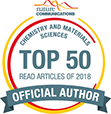

On-surface trinuclear iron-based coordination nanostructures: atomic-scale engineering of nanomaterials for optoelectronics and catalysis
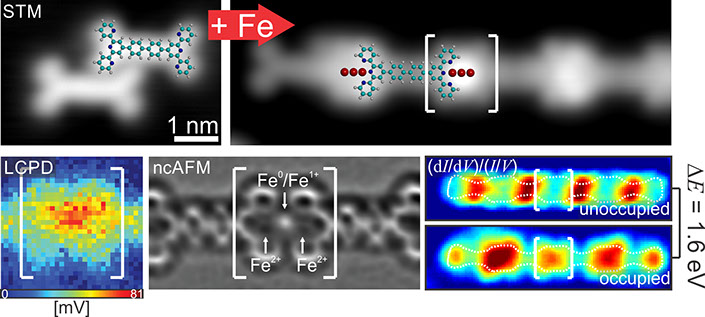
21.06.2018
We used protocols of supramolecular chemistry to synthesise, on a surface and from the bottom-up, 1D metal-organic nanostructures based on a mixed valence tri-iron coordination motif. Via a combination of low-temperature scanning tunneling microscopy (STM) and spectroscopy, non-contact atomic force microscopy (ncAFM), x-ray absorption spectroscopy and density functional theory, we fully characterized the atomic-scale structural, electronic and chemical properties of these nanostructures, which could be useful for future (opto)electronics and catalysis applications.
Interview on RRR: Agustin discusses bottom-up engineering of nanomaterials
20.05.2018
Agustin spoke with the Einstein a Go-Go crew on RRR about the group's activity within the ARC Centre of Excellence for Future Low-Energy Electronics Technologies (FLEET), and how we use bio-inspired supramolecular self-assembly to fabricate low-dimensional nanomaterials with tailored electronic structures.
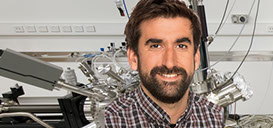
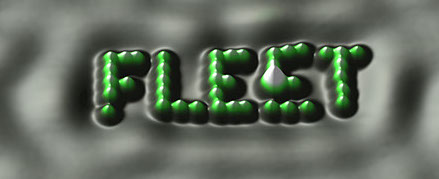
Manipulating single iron atoms on a silver surface
02.02.2018
By using the tip of a scanning tunneling microscope (STM), Marina managed to control the position of 42 iron atoms on a silver surface, writing the smallest logo of our ARC Centre of Excellence for Future Low-Energy Electronics Technologies (FLEET). The logo is 25 nanometres high.
Writing the smallest 'FLEET' logo by manipulating 42 iron atoms on a silver surface with an STM tip.
Orbital-specific electronic interaction between molecule and metal
10.10.2017
By performing low-temperature scanning tunneling microscopy and spectroscopy, we found out that the strength of the electronic coupling between a single molecule and a metal surface depends strongly on the location of the interacting orbital within the molecule.
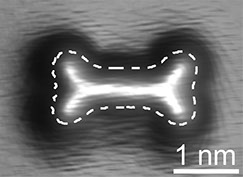
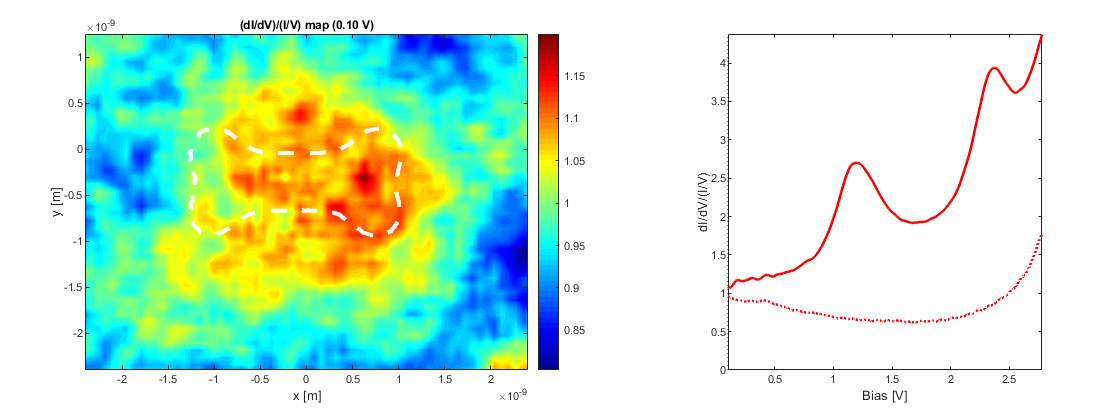
Scanning tunneling micrograph and dI/dV spectroscopy maps of a single TPPT molecule on a silver (111) surface.
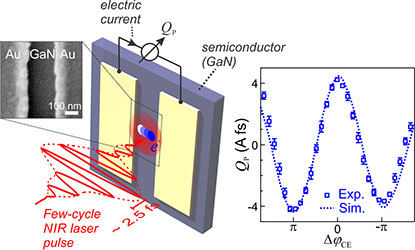
Ultrafast control of electric current in a semiconductor
14.11.2016
By using few-cycle waveform-engineered near-infrared laser pulses, we demonstrated all-optical generation and control of directly measurable electric current in a semiconductor, on a timescale of ~1 fs.

Polarization-induced energy level shifts at the boundaries of 2D molecular nanoclusters
06.10.2015
We studied 2D nanostructures composed of hydrogen-bonded PTCDA molecules on NaCl/Ag(111) by low-temperature scanning tunneling microscopy (STM) and spectroscopy. We observed significant differences in molecular energy levels (~0.4 eV) between molecules at the edge and at the centre of these nanoclusters, due to variations in the local electrostatic environment.
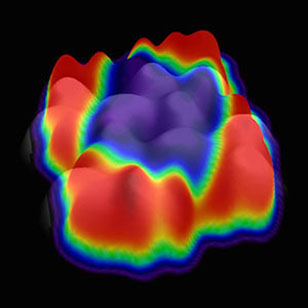
3D representation of an STM image of a nanocluster composed of 12 PTCDA molecules on sodium chloride. Red (blue) corresponds to larger (smaller, respectively) energy gap between occupied and unoccupied states.